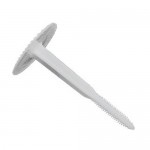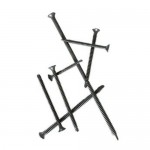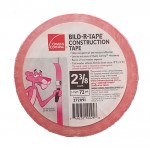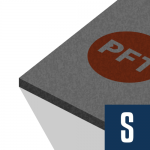5 Good Questions: FOAMULAR® Applications
Below is a simple Q and A session covering the basic applications of the worlds best rigid insulation, Owens Corning™ FOAMULAR®.
Q: Can FOAMULAR® be installed directly against steel studs?
A: Yes. FOAMULAR® is an excellent choice for use as continuous insulation (ci) directly against steel studs. When using FOAMULAR® or any other type of non-structural sheathing (foam, gypsum) the steel stud framing must be independently braced against lateral and rotational forces. See Underwriters Laboratories wall assemblies V414 and V434 for fire rating details with FOAMULAR® applied directly to steel studs.
Q: What products does Owens Corning recommend to be used in a wall construction consisting of a brick veneer and steel frame?
A: The steel stud cavities should be insulated with Owens Corning fiber glass batts, either Thermal Batt insulation or Flame Spread 25 insulation depending on the type of building construction, and the type of facer needed to comply with building code flame spread requirements. Batt facings have different perm ratings that should be considered to suit the particular building conditions. Also, a FOAMULAR® insulating sheathing product should be installed over the steel studs to create a layer of continuous insulation. FOAMULAR® 150 or 250 may be used as sheathing. Also consider FOAMULAR® INSULPINK® and PROPINK® sheathings, both of which are reinforced with facers to increase strength.
Q: Can FOAMULAR® be used between wood studs?
A: It can but is generally not the preferred method of installation. FOAMULAR® is not manufactured in sizes that fit readily between wood studs. Therefore it must be field cut to fit. There are other insulation products such as Owens Corning Thermal Batt Insulation that is more efficiently utilized between wood studs.
Q: Does FOAMULAR® used as sheathing on the exterior of a wall create a double vapor retarder?
A: It may seem that it would because it is perceived to be “impermeable plastic”, but, when considered in the context of the wall, generally, it does not. All sheathing materials resist moisture vapor penetration to some degree. So, in that regard, all sheathings are a “vapor retarder”, that are often used opposite an internal vapor retarder, thus creating a “double vapor retarder”. To really assess, it is important to differentiate a couple of key properties, perm rating and R-value. 1” FOAMULAR® sheathing actually has a vapor permeance (1.1 perm) that is higher (passes more water vapor) than the commonly accepted definition of a vapor retarder (1.0 perm), and, higher than ½” OSB (0.70 perm), commonly perceived as an acceptable sheathing. So, from that perspective alone, FOAMULAR® passes more water vapor (is less of a vapor retarder) than does commonly accepted OSB sheathing. Then, consider the fact that FOAMULAR® is an insulating sheathing, having an R-value of 5 per inch. An insulating sheathing keeps the wall stud cavity warmer. Warmer air and surfaces are less likely to experience condensation than colder air/surfaces at any given level of humidity. So, FOAMULAR® insulating sheathing, that is also semi-permeable, is not a “double vapor retarder” concern.
Q: How can moisture be managed in a steel stud wall assembly?
A: FOAMULAR® 250 continuous insulation sheathing and Owens Corning fiber glass batt insulation are important parts of managing moisture in steel stud wall assemblies. Moisture can intrude in at least three different ways: 1) air infiltration, 2) pressurized liquid moisture driven from outside, and 3) vapor permeation and condensation from outside or inside depending on conditions. FOAMULAR® sheathing with well sealed joints is very resistant to air infiltration and pressurized liquid moisture from outside. FOAMULAR® also keeps the stud cavity warmer so that dew point temperatures are shifted to points in the wall where condensation won’t occur or where it can drain away harmlessly. Well sealed facers on fiber glass batt insulation help limit air infiltration and vapor permeation from the inside.









